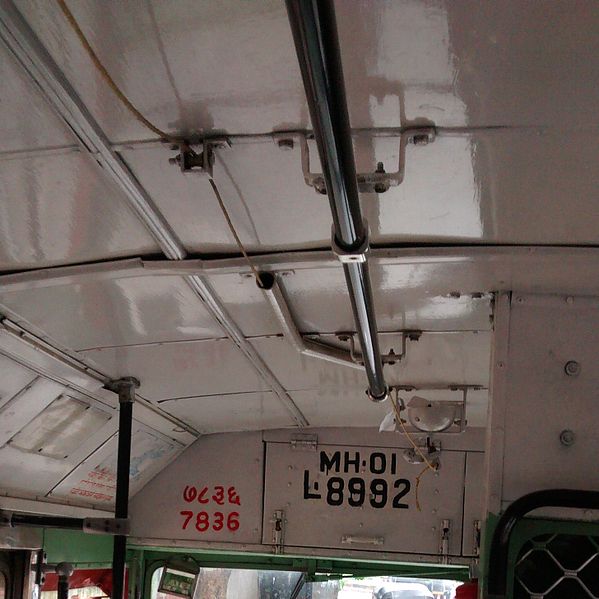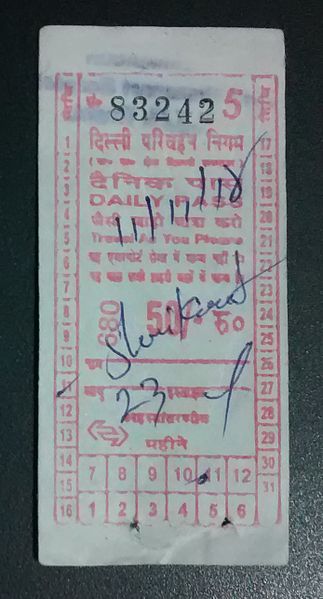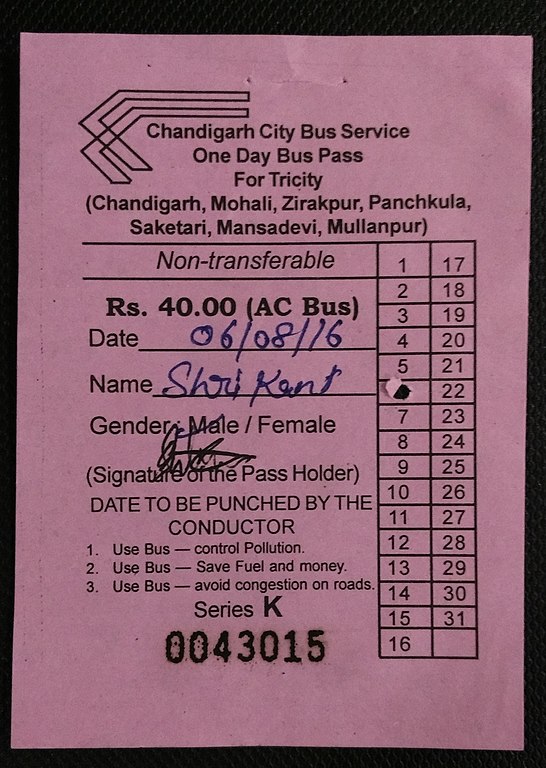So recently, the Delhi Government, announced that they were going to implement a new rule from January 1st 2016, which would allow vehicles with Odd and Even registrations to ply only on alternate days. Like the rest of the world, I think it is a dumb idea. The intention might be good, to reduce pollution, but the backlash this is going to have, is going to wreak havoc across not just the National Capital Territory, but also the National Capital Region.
Note: Many readers have complained that I have a bad perspective because I’m a Mumbaikar. Just to clarify, that in the period running up to the New Year and for the next two weeks, I was a resident of the National Capital Region, living in Gurgaon and traveling to Delhi every alternate day. I was subject to the Odd-Even Joomla for 12 out of 15 days.
Before, I go forward, I just want to remind you of two things:
- This nonsensical proposal was planned for Mumbai by the AAP’s big brother Congress, over a decade ago. It got scrapped, and for a good reason.
- This proposal apparently works well in China. People who support it forget one thing. China is not a Democracy.
Another point to add is that the aim of this whole system is to reduce pollution, not traffic on the roads. Using that as a metric to claim its success is not valid.
So, why would this be a problem?
Enforcement Issues
Enforcing this would be a major headache. With the exception of Gurgaon, the areas of the NCR surrounding Delhi, are contiguous territories. It is nearly impossible to distinguish between Ghaziabad, Faridabad, NOIDA and Delhi. Now, given that the Delhi Government, specifically the Delhi RTA, would have authority over only DL-registered vehicles, how will they stop other vehicles from plying? Delhi, by virtue of being a Union Territory, has lesser road taxes, so nobody would get a HR or UP registration to ply their vehicles. But how would they stop vehicles from other parts of the NCR from doing so? Especially since places like Faridabad and NOIDA don’t have that good public transport as Delhi!
Extra Load on Existing Infrastructure
This move will screw up the way people travel in Delhi. Delhiites love poking fun at Mumbaikars for the Suburban Rail, calling it smelly, overcrowded, and what not. There is a statement, “Darr ke aage Jeet Hai, aur Dadar ke aage Seat Hai”, which translates to “There is Victory ahead of Fear, and a Seat ahead of Dadar”. Atleast, the Suburban, by virtue of not being air-conditioned, has stale air being pumped out from inside the train. More importantly, we have Fast trains in Bombay. We don’t have to sit in a train from Churchgate to Virar stopping at every single station on its way. The Delhi Metro is worse than the Mumbai Suburban in terms of crowd. DMRCL often goofs up by running 6 car trains to Gurgaon and 4 car trains to Faridabad.
There is this video of officers pushing people into the train, where they are packed like sardines in a tin can so that the doors can close. I have seen people pushing each other inside and being stuffed in a similar manner in Gurgaon-bound trains. The Delhi public will not travel in the Ring Railway, thus making Metro the ONLY way to travel around for those who need to go long distances. The situation in the MMR cannot be compared because the MMR has multiple railway lines, one Metro line, plus one Monorail, plus the killer combination of BEST, TMT, NMMT. No matter how unethical NMMT and TMT are, they are far more efficient than the DTC and its new sibling the DIMTS. This will also push up the crowds in buses, which already crowded. Delhi buses are filthy cheap, and this makes it worse. With a reported 400 buses breaking down each day, this means that the government has to hire more buses, which is resulting in the steady comeback of Blueline buses.
EMERGENCY
What if I have an emergency, I need to get out of my house in a hurry? What if my office is in the other end of the city and I don’t a have a Metro line anywhere near me? What if someone in my house is sick and I need to take them to the Hospital? Rich or poor, I am not going to buy a new car. This move will also affect carpoolers. What if five people who carpool, rotating cars on a daily basis, all have Even-numbered registrations? What if all are Odd-numbered? Has this been considered? I don’t think so. This move will affect Cab aggregators like Ola and Uber massively.
Fake Number Plates
Back in 2005, the Central Government had amended Section 50(2)(d) of the Central Motor Vehicle Rules [CMVR] to mandate the implementation of High Security Number plates. This was later upheld by the Supreme Court of India in 2011. These plates had security features such as a Hologram, could NOT be tampered-with and had to be fixed by an officer of the RTO only. So far only a handful of states including Sikkim, Goa, Gujarat, have implemented it. Anyone can duplicate number plates and change it daily. This is going to give a new boost to these fake number plate manufacturers however.
Priorities
Noble or not, the Delhi government has got its priorities wrong. Massively.
- The state government has not cleared payment of salaries to striking workers of the Municipal Corporations, resulting in the city being called the Garbage Capital of India. It has however, gone ahead with a 400% salary hike for its MLAs.
- The state government recently launched an App called Swachh Delhi to help users spot garbage, click a photo and send it to with coordinates. While numerous glitches have caught user unaware, there is no point in such an app if the government is unwilling to coordinate with the Municipal Bodies.
- As if the Garbage App wasn’t enough, the government has launched another app that will point homeless people to the nearest shelter. The question here is, why would a homeless person have a Smartphone in the first place? Granted they are cheap, but still. The government has further stated that the iOS version will come out soon! This is a mockery of Digital India. Remember what I said earlier here? If the Government focused more on generating employment, then there would be fewer homeless people. These aren’t traveling Musicians like Llewyn Davis.
If the state government is seriously interested in reducing air pollution, it needs to start coordinating with the Centre, and other States in the NCR to find a long term solution to tackle the issue. The NCT is super congested, and banning certain vehicles on certain days is going to compound the issue rather than solve the problem. Delhi’s AC buses are already pathetic, and this is going to render them useless. Better public transport, and better connectivity, is what will show results, filling pockets of autowallahs who don’t charge per the meter won’t. Further, the ban on Surge Pricing for Cab aggregators like Uber and Ola is worsening the situation, causing a lack of cabs in places that require them and letting the Auto mafia rule.
Exemptions
Recently, the Delhi government announced a few exemptions. Among them are:
- All two wheelers
- CNG Vehicles
- Electric and Hybrid Vehicles
- Women Drivers with a Male Child of Upto Age 12
- President, Vice President, Prime Minister and Cabinet, Ministers of other States, except Delhi
- Emergency Vehicles
- Defence Vehicles
- Vehicles of SPG Protectees
- Those On the Way to a Hospital [With Proof]
Now these exemptions, are major loopholes. Two wheelers are exempt. Are they not polluting? Evidently, Kejriwal and team have never been to Pune or Bangalore. According to a recent IIT Kanpur report: 46% pollution is created by trucks in the city when it comes to both PM 10 and PM 2.5. Two-wheelers contribute to 33% of the pollution, 10% is contributed by four-wheelers. Buses contribute to 5% of the pollution, whereas 4% is done by light commercial vehicles, and the rest is the contribution of three-wheelers and other factors.
CNG Vehicles, which make up most of the Public Transport. So, again, not much difference, people an pay ₹50k, get a CNG conversion done and keep going. Further, what stops a CNG vehicle from driving on Petrol? Hybid and Electric is fine to a certain extent, but then we must remember, these vehicles are expensive, and thus, the rich car owners of South Delhi can rejoice. Again, what stops a Hybrid vehicle from switching to fuel? Women Drivers with a Male Child? What sort of rubbish is this? So every woman in the household will now drive with her kid next to her. Official, Emergency and Defence Vehicles fine. Those on the way to the hospital must furnish proof? So if a car is stopped, you can throw a fit at the officers feet and he’ll let you go?
Commissioner of Police Delhi, BS Bassi, stated that out of 85lakh vehicles, 70lakh were exempt. What kind of rule is this? Lawyers have also been exempted from this rule.
The proposed fine for this is ₹2000 for each offence. Well done GNCTD, Well Done. You have successfully ruined a decent city.
Claiming that it was a success, two hours after it was launched, on a long weekend, when schools were shut in the winter, has to be the most illogical statement without any scientific backing whatsoever.
Updates
- The Delhi High Court has asked the government to end the plan in one week and submit its findings, while explicitly stating that it inconvenienced commuters and that Public Transport was insufficient.
- The District Administration of the Gautam Budh Nagar in Uttar Pradesh hs ordered the staggered closure of markets in NOIDA and Greater NOIDA to curb vehicular pollution.
On 27th January, the Central Pollution Control Board stated that:
Overall, it can be stated that while some reduction in air pollution is likely to happen due to odd-even scheme, a single factor or action cannot substantially reduce air pollution levels in Delhi. Therefore, a comprehensive set of actions following an integrated approach is required to make substantial improvement in air quality,”
CNG Sticker Scam
With Round 2 of the Odd-Even scheme announced in April, a new twist has emerged.
The GNCTD had mandated that in order to be exempt from the earlier Odd-Even mess, all CNG vehicles would require a CNG sticker. These holographic stickers would be available at Indraprastha Gas stations. However, it has now emerged that these stickers could either be fake or sold off to car owners who don’t have a CNG vehicle.
Journalist Rahul Kanwal of India Today had this to tweet out about it.
Complete con job. Every other car at ITO has a CNG sticker. When I ask if the driver can open the boot – he freaks. Aise koi fayda nahi!
IVRS Scam
Another point to be noted was the IVRS Scam. Originally posted by the Frustrated Indian, this scam basically involved fake figures to showcase the Odd-Even hoopla as a success.
![]()









![TSRTC Travel As You Like [TAYL] Ticket.](https://upload.wikimedia.org/wikipedia/commons/thumb/f/fa/TSRTC-Hyd-AC-Daily-Pass.jpg/338px-TSRTC-Hyd-AC-Daily-Pass.jpg)


